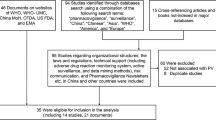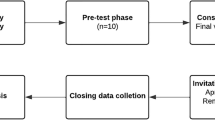Abstract
Background: Although US poison control centres manage approximately 30 000 adverse drug reactions each year, the extent of voluntary reporting of these events to the US Food and Drug Administration (FDA) MedWatch spontaneous surveillance programme is unknown.
Methods: A survey was mailed to directors of all 72 US poison control centres during April 1999 to determine their practices and opinions on reporting adverse drug reactions. The survey requested information on the poison control centre staff’s practices in reporting adverse drug reactions to the FDA MedWatch programme during 1998.
Results: A total of 56 fully completed surveys were returned. Of the respondents, 30 had not directly submitted adverse drug reaction reports to the FDA, 22 had submitted 10 or less, and 4 had submitted a total of 47 during 1998. Reasons given for not routinely reporting adverse drug reactions included adverse drug reactions reporting is not part of the regular routine (20%), lack of time to complete forms (15%), inability to determine causality (13%), most reactions are already reported and not unique (10%), reporting to the FDA is too much work (9%), and responsibility rests with the attending physician (7%). Direct reporting to MedWatch of any cases of adverse drug reactions was more likely when the poison control centre was certified by the American Association of Poison Control Centers (p < 0.05; odds ratio = 5.1; 95% confidence interval 1.1 to 23.5); however, this practice was not associated with documenting deaths associated with adverse drug reactions, having more than 75% of the staff of the Poison Information Specialists composed of pharmacists or nurses, or managing greater than 20 000 or 34 000 human exposure cases during 1998. Approximately half of the poison control centres directly or indirectly reported some adverse drug reactions to the FDA by virtue of contacting the manufacturer or cooperating with postmarketing surveillance.
Conclusion: Poison control centres represent an underutilised source of reporting to MedWatch, but several internal and external obstacles limit the direct reporting of adverse drug reactions routinely.




Similar content being viewed by others
References
Lazarou J, Pomeranz BH, Corey PN. Incidence of adverse drug reactions in hospitalized patients. A meta-analysis of prospective studies. JAMA 1998; 279: 1200–5
Aparasu RR. Visits to office-based physicians in the United States for medication-related morbidity. J Am Pharm Assoc 1999; 39: 332–7
Johnson JA, Bootman JL. Drug-related morbidity and mortality. Arch Intern Med 1995; 155: 1949–56
Phillips DP, Christenfeld N, Glynn LM. Increase in US medication-error deaths between 1983 and 1993. Lancet 1998; 351: 643–4
Bates DW. Drugs and adverse drug reactions. How worried should we be? JAMA 1998; 279: 1216–7
Kessler DA. Introducing MEDWatch: New approach to reporting medication and device adverse effects and product problems. JAMA 1993; 269: 2765–8
Cullen DJ, Bates DW, Small SD, et al. The incident reporting system does not detect adverse drug events: a problem for quality improvement. J Qual Improvement 1995: 21: 541–8
Generali JA, Danish MA, Rosenbaum SE. Knowledge of and attitudes about adverse drug reaction reporting among Rhode Island pharmacists. Ann Pharmacother 1995; 29: 365–9
Rogers AS, Israel E, Smith CR, et al. Physician knowledge, attitudes, and behavior related to reporting adverse drug events. Arch Intern Med 1988; 148: 1596–1600
Annual adverse drug experience report: 1996. Washington DC: Surveillance and Data Processing Branch, Division of Pharmacovigilance and Epidemiology, Office of Epidemiology and Biostatistics, Center for Drug Evaluation and Research, Food and Drug Administration [online]. Available at: URL: http://www.fda.gov/cder/dpe/annrep96/index.htm.[Accessed 1999 Oct 22]
Youniss J, Litovitz TL, Villanueva P. Characterization of U.S. poison centers: a 1998 survey conducted by the American Association of Poison Control Centers. Vet Human Toxicol 2000; 42: 42–53
Litovitz T. The TESS database. Use in product safety assessment. Drug Safe 1998; 18: 9–19
Litovitz TL, Klein-Schwartz W, Caravati EM, et al. 1998 Annual report of the American Association of Poison Control Centers Toxic Exposure Surveillance System. Am J Emerg Med 1999; 17: 435–87
Rosner B. Fundamentals of biostatistics. 4th ed. Belmont (CA): Wadsworth; 1995: 352–70
Schiff G. Monitoring and reporting adverse drug reactions. Infusion 1985; 9(6): 168–72
Scott HD, Thacher-Renshaw A, Rosenbaum SE, et al. Physician reporting of adverse drug reactions. JAMA 1990; 263: 1785–8
Veltri JC, McElwee NE, Schumacher MC. Interpretation and uses of data collected in poison control centres in the United States. Med Toxicol 1987; 2: 389–97
Jick H, Garcia Rodriguez LA, Perez-Gutthann S. Principles of epidemiological research on adverse and beneficial drug effects. Lancet 1998; 352: 1767–70
Love JN, Litovitz TL, Howell JM, et al. Characterization of fatal beta blocker ingestion: a review of the American Association of Poison Control Centers data from 1985 to 1995. J Toxicol Clin Toxicol 1997; 35: 353–9
Litovitz T, Manoguerra A. Comparison of pediatric poisoning hazards: an analysis of 3.8 million exposure incidents. A report from the American Association of Poison Control Centers. Pediatrics 1992; 89: 999–1006
Krenzelok EP, Litovitz T, Lippold KP, et al. Cimetidine toxicity: an assessment of 881 cases. Ann Emerg Med 1987; 16: 1217–21
Martin AC, Caravati EM, Crouch BI, et al. Poison exposures in the elderly: a five-year descriptive study [abstract]. J Toxicol Clin Toxicol 1999; 37: 593
Dyer JE, R Kreutzer R, Quattrone A, et al. Multistate outbreak of poisonings associated with illicit use of gamma hydroxy butyrate. MMWR Morb Mortal Wkly Rep 1990: 39: 861–3
Wax P, May J. Tracking iatrogenic poisoning fatalities using the American Association of Poison Control Centers Toxic Exposure Surveillance System [abstract]. Ann Emerg Med 1999; 34(Pt 2): S29
Litovitz T, Clancy C, Korberly B, et al. Surveillance of loperamide ingestions: an analysis of 216 poison center reports. J Toxicol Clin Toxicol 1997; 35: 11–9
Litovitz T. Implication of dispensing cups in dosing errors and pediatric poisonings: a report from the American Association of Poison Control Centers. Ann Pharmacother 1992; 26: 917–8
Hopkins U, Klein-Schwartz W, Anderson B, et al. Methylphenidate exposures: 5 years of poison center experience [abstract]. J Toxicol Clin Toxicol 1999; 37: 648
Woolf A, Burkhart K, Caraccio T, et al. Self-poisoning among adults using multiple transdermal nicotine patches. J Toxicol Clin Toxicol 1996; 34: 691–8
Woolf A, Burkhart K, Caraccio T, et al. Childhood poisoning involving transdermal nicotine patches. Pediatrics 1997; 99(5): E4 [online]. Available from: URL: http://www.pediatrics.org/cgi/cont/abstract/99/5/e4 [Accessed 1999 Oct 22]
Klein-Schwartz W. Toxicity of polysaccharide-iron complex exposures reported to poison control centers. Ann Pharmacother 2000; 34: 165–9
Mowry J, Sanftleben J, Smith J. Eighteen month retrospective evaluation of Seroquel exposures [abstract]. J Toxicol Clin Toxicol 1999; 37: 631
Smilkstein MJ, Burton BT, Keene W, et al. Acute respiratory illness linked to use of aerosol leather conditioner. Oregon, December 1992. MMWR Morb Mortal Wkly Rep 1993; 41: 965–7
Olsson S. The role of the WHO programme on international drug monitoring in coordinating worldwide drug safety efforts. Drug Safe 1998; 19: 1–10
Bate A, Lindquist M, Edwards IR, et al. A Bayesian neural network method for adverse drug reaction signal generation. Eur J Clin Pharmacol 1998; 54: 315–21
Meyboom RHB, Hekster YA, Egberts ACG, et al. Causal or casual? The role of causality assessment in pharmacovigilance. Drug Safe 1997; 17: 374–89
Task Force on Risk Management. Managing the risks from medical product use: creating a risk management framework. US Department of Health and Human Services, Food and Drug Administration [online]. Available at: URL: http://www.fda.gov/oc/tfrm/riskmanagement.pdf. [Accessed 1999 May 25]
Calvert WS, Holihan V. Pharmaceutical Research and Manufacturers of America/Food and Drug Administration cooperation in building capabilities for electronic submission of postmarketing safety data. Drug Infor J 1999; 33: 1093–99
Chyka PA. Role of US poison centers in adverse drug reactions monitoring. Vet Human Toxicol 1999; 41: 400–2
Institute of Medicine Committee on Quality of Health Care in America. In: Kohn LT, Corrigan JM, Donaldson MS, editors. To err is human: building a safer health system. Washington, DC: National Academy Press, 1999
Author information
Authors and Affiliations
Corresponding author
Rights and permissions
About this article
Cite this article
Chyka, P.A., McCommon, S.W. Reporting of Adverse Drug Reactions by Poison Control Centres in the US. Drug-Safety 23, 87–93 (2000). https://doi.org/10.2165/00002018-200023010-00006
Published:
Issue Date:
DOI: https://doi.org/10.2165/00002018-200023010-00006




